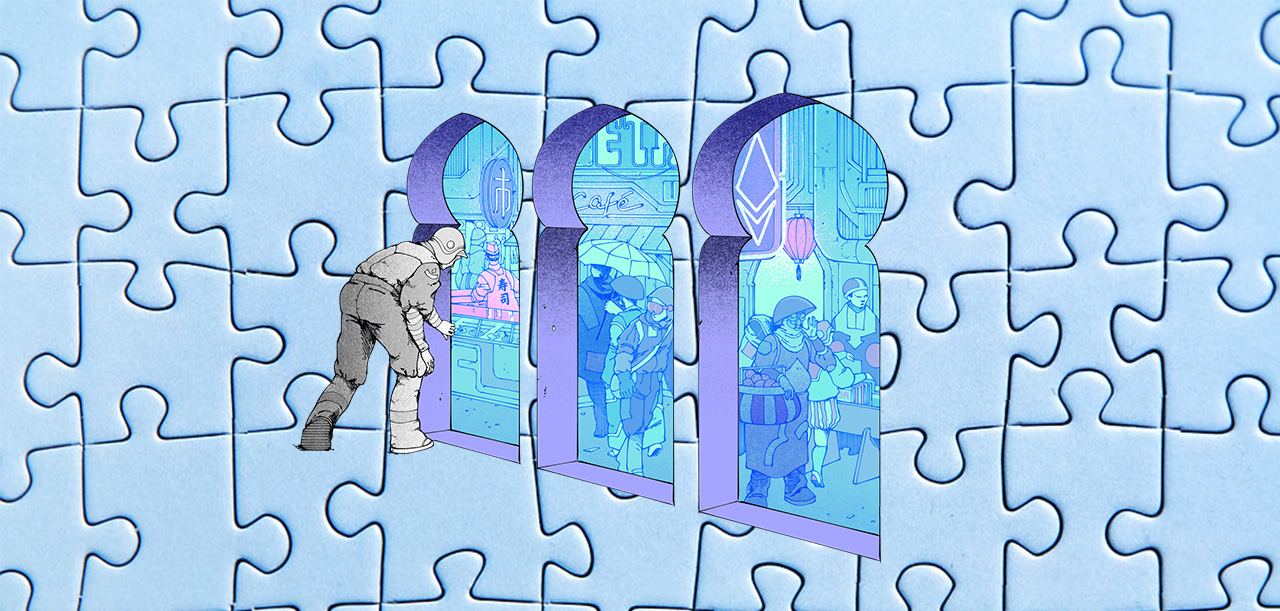What is the merge?
The merge is Ethereum’s transition from a proof-of-work blockchain to a proof-of-stake blockchain. It’s called ‘the merge’ because the main Ethereum network is now ‘merging’ with the first stage of the transition – the Beacon proof-of-stake chain that went live almost two years ago. You can read much more about the merge on the official Ethereum.org page here: https://ethereum.org/en/upgrades/merge/
Why is the merge happening?
The transition to proof-of-stake was always part of Ethereum’s road map, ever since Ethereum’s launch in 2015. There is a number of advantages to the proof-of-stake consensus method and the other changes that will accompany this shift. The goal is to make Ethereum more sustainable, capable of handling more transactions, and open up participation in the network to a larger community of users.
What’s the difference between proof-of-work and proof-of-stake?
Proof-of-work and proof-of-stake are two different consensus mechanisms – meaning, two different ways of running the blockchain and preventing fraudulent transactions. Both are decentralized and distributed through a global network of users; both work by creating incentives for good actors and discouraging bad actors, but do so through different approaches. Proof-of-stake uses significantly less energy than proof-of-work, making it more environmentally sustainable, enables Ethereum scalability, and allows more non-technical users to participate in the network and earn rewards through staking. Read more about the differences between PoW and PoS in this Nasdaq article by MEW founder Kosala Hemachandra.
Is there anything users need to do to prepare for the merge?
No, there is nothing users need to do. Your balances, your keys, the way you access your wallet, and the way you send or receive crypto on Ethereum will all stay the same. Your existing ETH and tokens automatically become compatible with proof-of-stake. If someone is asking you to use your recovery phrase to receive new ETH – it’s a scam.
What happens to your ETH?
Your ETH and any other tokens stay on the blockchain where they have always been, on the same addresses, and you access them as you always have with your web, browser, mobile, or hardware wallet. Your keys/recovery phrase remain the same and valid for wallet access and recovery. The history of the Ethereum blockchain is unaffected, and all past blocks and transactions remain valid.
Does everyone need to stake ETH in the proof-of-stake model?
No. You can continue to use Ethereum for all your needs without staking any ETH. However, staking helps make the network more secure for everyone – the more validators, the more decentralized and stable the network. In addition, staking ETH is an uncomplicated way to receive passive crypto rewards, so it might be something to consider.
How can I stake ETH and earn rewards?
Staking ETH is possible by running your own validator (for technically advanced users), by staking a full validator (32 ETH) through a provider, or by staking smaller amounts through providers that allow it. MEW supports full validator staking and liquid ETH staking with smaller amounts through integrated providers, both on MEW wallet app and on MEW web.
- Liquid staking with Lido on MEW wallet app iOS and on Android
- Full validator staking with Staked.us on MEW wallet app iOS and Android
- Liquid staking with Stakewise on MEW web
- Full validator staking with Staked.us on MEW web
If I already staked on ETH2, can I unstake and withdraw my ETH right after the merge?
No, ETH unstaking and withdrawal will not be possible until another network upgrade, currently expected 6-12 months after the merge. This is a part of the Ethereum road map and MEW does not have any control over when unstaking and withdrawals become available. However, your stake remains valid and continues to earn rewards through the merge. The recovery phrase or ETH2 keystore file associated with the wallet from which you staked continues to be the method of access for withdrawing your ETH at a later date.
What is MEW doing to prepare for the merge?
MEW is working with node providers to make sure the merge transition is smooth and seamless for our users. Keep in mind that MEW is a wallet built on Ethereum, but does not have control over the merge and the Ethereum blockchain itself.
Will Ethereum transaction fees change?
The short answer is no. While there has been some expectation about Ethereum 2.0 significantly reducing gas prices, in fact transaction fees on Ethereum mainnet will probably stay pretty much the same. However, Ethereum’s transition to proof-of-stake is part of a bigger plan to achieve greater scalability for Ethereum (handling more transactions at cheaper prices). This will include Layer 2 chains, side chains, and Ethereum-compatible ecosystems that are likely to have very low transaction fees.
What is ETHPOW?
The new Ethereum consensus model, proof-of-stake, removes the need for block creation through energy-intensive computations, and therefore takes away mining rewards. Because of this, some miners are not happy with the change and may try to fork the network after the merge, so that they can continue mining and receiving those rewards. ‘Forking’ means that the main, official Ethereum network would merge and become a proof-of-stake blockchain, while another network branch would go on as a proof-of-work blockchain and NOT go through the merge.
ETHPOW is the proposed native token for a planned Ethereum fork called EthereumPoW. If the fork happens, block creation on the two chains would become completely separate and the price of the proposed ETHPOW token would NOT be pegged to the price of ETH. It would have a separate and different valuation.
MEW does not have any control over or any relation to the proposed EthereumPOW fork. IF the fork happens, it is supposed to mirror ETH balances from the mainnet Ethereum, except that these tokens will be ETHPOW. So, if you have 1 ETH in a wallet on Ethereum, you will also have 1 ETHPOW on the same address on EthereumPoW network.
To manage these tokens, you would need to switch to ETHPOW, similarly to the way you can switch networks from Ethereum to Polygon on MEW web, MEW wallet app Android, or Enkrypt extension. Currently, MEW has no plans to support proof-of-work forks, due to security concerns (see following section).
IMPORTANT: How can post-merge forks affect Ethereum users?
There could be many proof-of-work forks appearing after the merge, in addition to EthereumPoW. Some of these chains might be outright scams trying to take advantage of users during this confusing time. Crucially, many of them can be prone to something called replay attacks: when transactions sent on those chains can also be valid on the official Ethereum mainnet, or another blockchain.
For example: if the new ETHPoW token is launched, it is likely to be much cheaper than the real ETH. If you send the cheap ETHPoW tokens to another address to sell them, this transaction might be replicated on the main Ethereum network. As a result, you could end up inadvertently transferring your actual ETH for this same cheap price. This could be true for the EthereumPoW network, and/or other networks launched after the merge.
Due to these security concerns, we do not recommend interaction with forked chains like EthereumPoW unless and until you are certain that it is safe (when appropriate code is added and measures put in place to prevent replay attacks).
As always, never give your phrase to anyone for any reason, do not put your phrase directly into a website, and do not interact with any tokens unless you are sure of their origin and safety.

